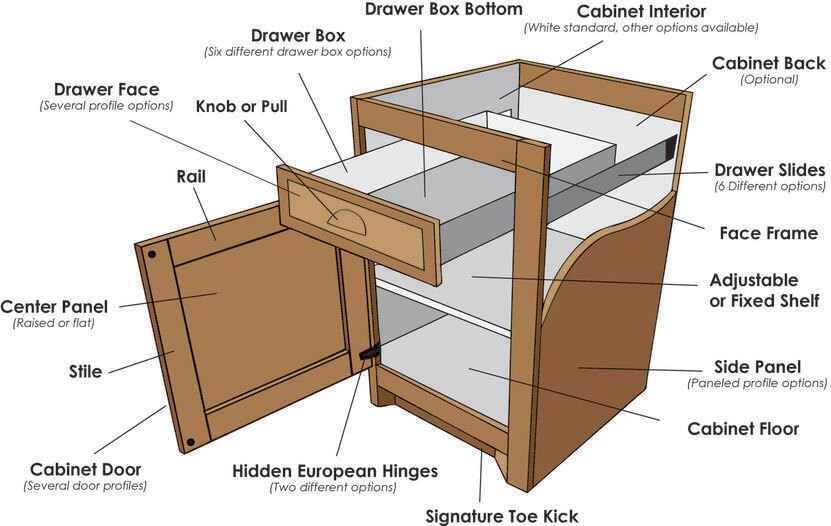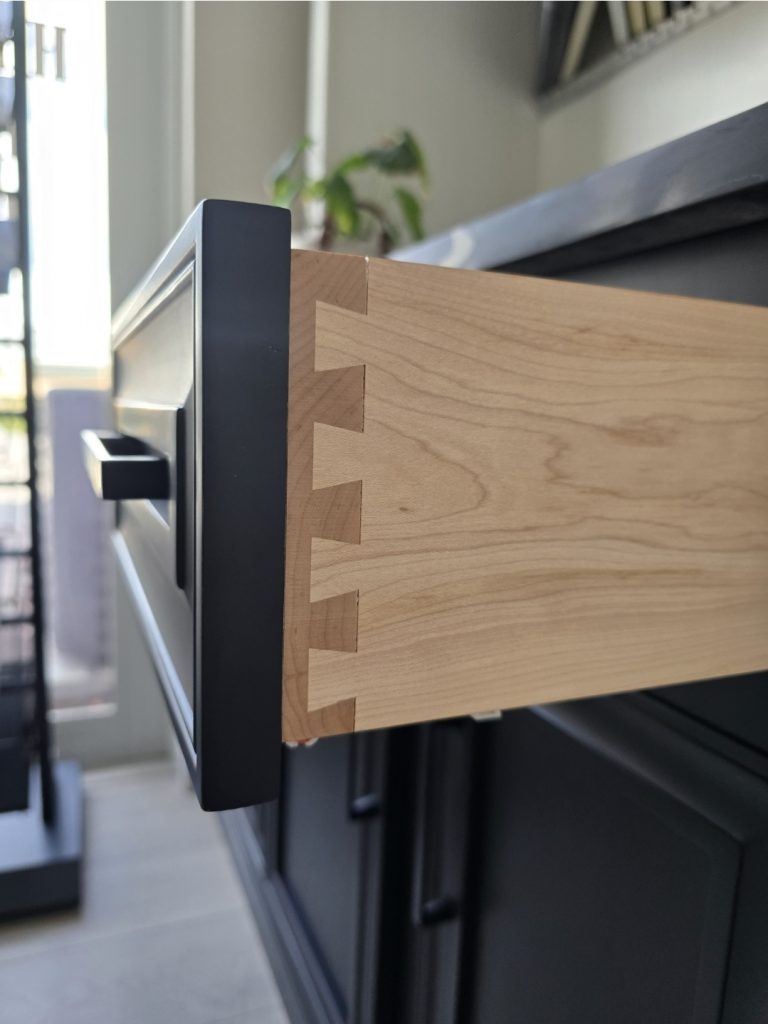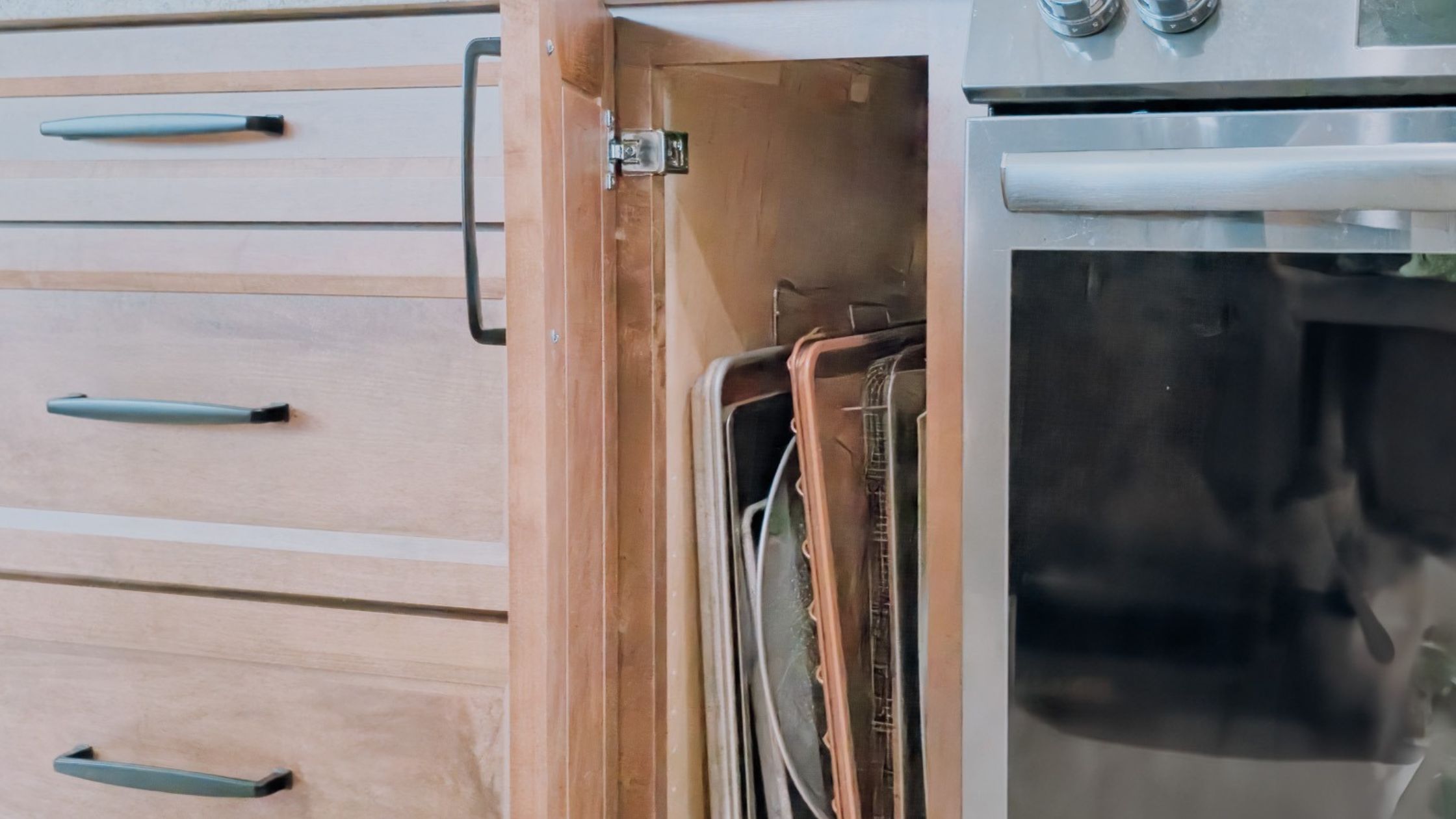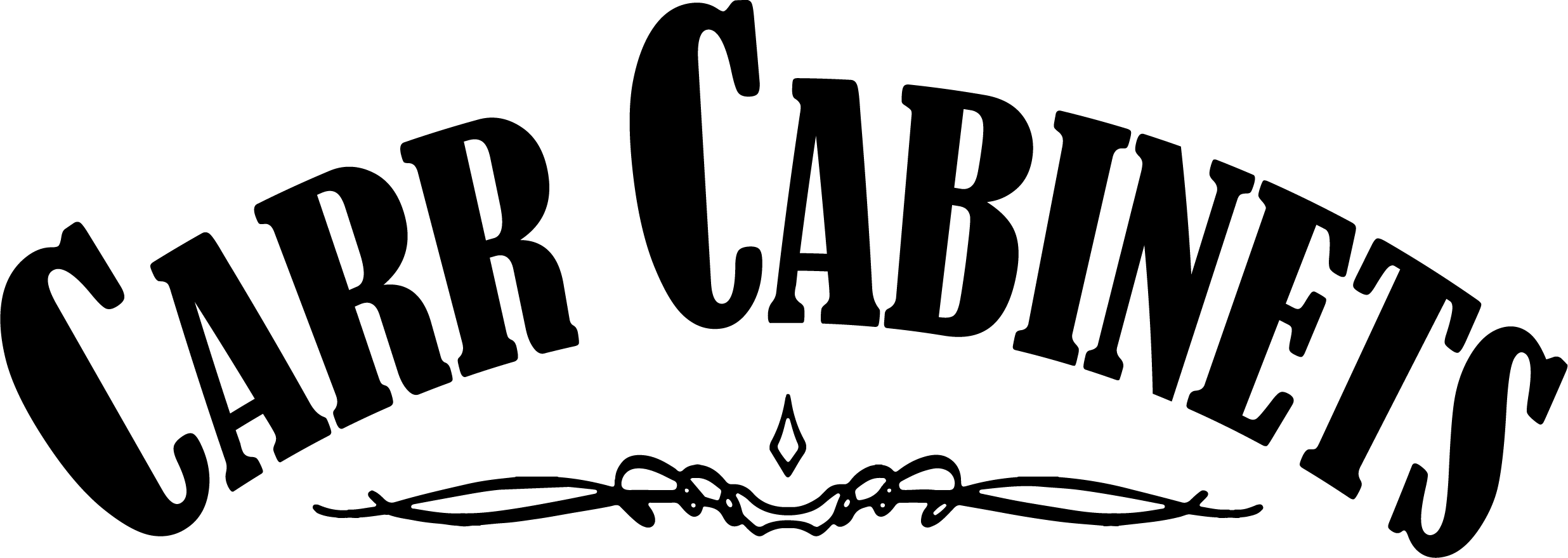Whether you’re renovating your kitchen, building custom furniture, or simply curious about cabinet construction, understanding cabinet terminology is essential. Knowing the names of cabinet parts like face frame, stile, rail, hinge, and slide can help you make informed decisions, communicate effectively with contractors, and choose the right hardware for your space. In this comprehensive guide, we’ll walk you through the most common cabinet terms and definitions, breaking down each component to help you become a cabinet expert!
Cabinet Construction Basics
Before diving into individual cabinet parts, it’s helpful to understand how cabinets are constructed. Cabinets come in two main styles: face frame cabinets and frameless cabinets.
- Face Frame Cabinets have a wooden frame attached to the front edges of the cabinet box. This frame provides strength, structure, and a classic look.
- Frameless Cabinets, often called European-style cabinets, skip the front frame, offering a sleek, modern appearance and maximizing interior space.
Both styles use many of the same components, but their construction details differ slightly, especially when it comes to hardware and joinery.
Key Cabinet Parts and Definitions

1. Face Frame
The face frame is the front-facing structure of the cabinet box. It consists of horizontal and vertical wood pieces — the rails and stiles — that frame the cabinet openings. Face frame cabinets are known for their durability and traditional appearance. The face frame adds rigidity to the cabinet and provides a mounting surface for hinges and doors.
2. Stile
Stiles are the vertical pieces of the face frame. Positioned on either side of the cabinet opening, stiles provide side-to-side stability. In addition to supporting the cabinet structure, they serve as attachment points for door hinges.
You’ll often hear the term “stile and rail construction” in reference to cabinet doors, where stiles form the vertical sides of the door frame.
3. Rail
Rails are the horizontal components of the face frame. They connect the stiles at the top and bottom, reinforcing the cabinet box and framing the opening. Rails also appear in cabinet doors, where they run horizontally across the top and bottom of the door frame.
Stile and rail construction is a time-honored technique in cabinetry, adding both strength and visual appeal to cabinet doors and frames.
4. Cabinet Doors
Cabinet doors come in various styles, including shaker, raised panel, and slab doors. Each style affects the cabinet’s overall look and functionality.
- Shaker doors feature a flat center panel with stile and rail framing.
- Raised panel doors have a contoured center panel that adds dimension.
- Slab doors are flat and frameless, offering a sleek, modern appearance.
When selecting cabinet doors, consider the design, material, and finish to match your space.
5. Cabinet Hinges
Hinges are crucial cabinet hardware that allows the doors to open and close smoothly. There are several types of cabinet hinges:
- Concealed hinges (also known as European hinges) are hidden from view when the cabinet door is closed, providing a clean look.
- Overlay hinges determine how the door overlaps the cabinet frame.
- Inset hinges are used when the door fits flush with the cabinet frame.
Choosing the right cabinet hinge type enhances both the functionality and aesthetics of your cabinets.
6. Cabinet Slides
Cabinet slides, also called drawer slides, enable drawers to open and close smoothly. They come in different styles:
- Side-mount slides attach to the side of the drawer and cabinet.
- Undermount slides are hidden beneath the drawer for a cleaner appearance.
- Ball-bearing slides offer smooth, quiet operation and higher weight capacity.
Proper selection of cabinet slides ensures your drawers operate efficiently, even with heavy loads.
7. Cabinet Box
The cabinet box, or carcass, forms the structural shell of the cabinet. It includes the sides, top, bottom, and back panels. Whether made from plywood, MDF, or particleboard, the quality of the cabinet box impacts durability and longevity.
8. Toe Kick
A toe kick is the recessed space at the bottom of the cabinet. It provides a comfortable place for your feet when standing close to the counter, improving ergonomics in the kitchen or workspace.
9. Cabinet Hardware
Cabinet hardware refers to decorative and functional components like knobs, pulls, handles, and catches. Hardware adds personality to your cabinets and enhances usability. Matching your cabinet hardware to your overall design theme is an easy way to elevate your space.
Types of Cabinet Frames
As mentioned earlier, cabinets come in face-frame and frameless designs. Let’s explore their key differences:
Face Frame Cabinets
- Feature a front frame for stability.
- Traditional, classic look.
- Easier to install on uneven walls.
- Doors and drawers can be inset, partial overlay, or full overlay.
Frameless Cabinets
- No face frame; doors attach directly to the cabinet box.
- Modern, sleek design.
- Maximizes interior storage space.
- Requires precise installation for proper alignment.
When choosing between these styles, consider your aesthetic preferences, storage needs, and budget.
Cabinet Joinery and Construction Terms

Understanding basic cabinetmaking terms helps you evaluate cabinet quality and craftsmanship.
- Dovetail joints: Strong interlocking joints commonly used in drawer construction.
- Mortise and tenon: Traditional joinery technique for connecting rails and stiles.
- Pocket screws: Fastening method used for face frames and carcass assembly.
- Rabbet and dado joints: Grooved joints that provide structural strength.
High-quality joinery improves cabinet longevity and resistance to wear.
Tips for Choosing Cabinet Components
When selecting cabinets and hardware for your home or project, keep the following tips in mind:
- Durability matters: Look for solid wood frames, quality hinges, and durable slides.
- Style consistency: Match your cabinet doors and hardware to your design theme.
- Functionality: Consider soft-close hinges and full-extension slides for convenience.
- Maintenance: Choose finishes and hardware that are easy to clean and maintain.
A well-informed choice ensures your cabinets remain beautiful and functional for years to come.
Final Thoughts
Cabinet construction might seem complex at first, but once you understand the basic cabinet terms and definitions it becomes much easier to plan your renovation or woodworking project. Whether you’re focusing on the face frame, evaluating different cabinet hinge types, or selecting the perfect cabinet slides, every component plays a critical role in the look, strength, and usability of your cabinets.
At Carr Cabinets, we transform these technical elements into beautiful, functional spaces that tell your home’s unique story. Our master craftsmen blend traditional woodworking expertise with modern innovation, creating cabinetry that doesn’t just meet specifications—it exceeds expectations. By partnering with Carr Cabinets, you gain more than just stunning kitchen or bathroom storage; you gain a deeper appreciation for the artistry behind every joint, finish, and hardware selection. Ready to elevate your home with cabinetry that stands the test of time? Let Carr Cabinets bring your vision to life—where every detail matters and quality craftsmanship comes standard.



